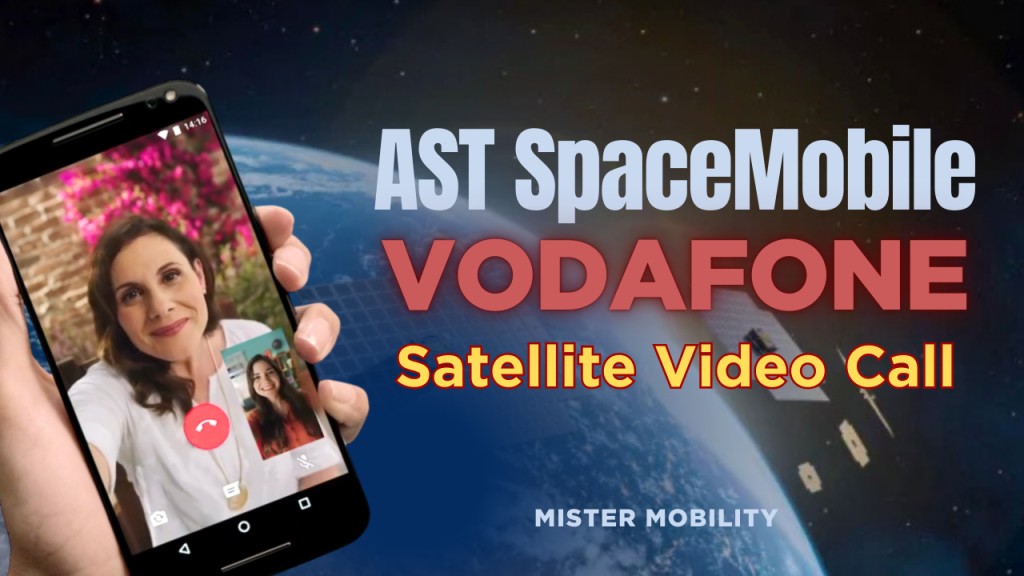While Starlink and T-Mobile have initiated their direct-to-cell (DTC) satellite service with just SMS and are planning to include voice and data later in 2025, in the UK, Vodafone and a satellite operator, AST SpaceMobile have successfully conducted a satellite video call over a similar connection.
It is exciting times in the world of mobile phone connectivity and what is most exciting is that we are transitioning into a phase where mobile phone subscribers can begin to enjoy continual connectivity even when outside of their carrier or mobile network operators coverage area through the use of satellite connectivity.
Table of Contents
Traditional satellite phones
We have had satellite phones for decades. I remember the early 2000s, satellite phones were big chunky and expensive. They were not something that the average mobile phone subscriber could afford. As a matter of fact, they were the exclusive preserve of the high and mighty. Also, to use a satellite phone, you require a direct line of sight with the satellite in orbit.
Direct-to-cell satellite telephony is different
The new technology on ground, called Direct to cell, means that regular smartphone users like you and I with our regular 4G smartphones can connect to low earth orbit satellites and use that connection for voice telephony, SMS, and mobile data, whenever we are outside the coverage area of our carriers or mobile network operators. That’s what Starlink is doing with T-Mobile in the United States, and that’s what Vodafone UK is doing in partnership with AST SpaceMobile.
The first satellite video call over a direct-to-cell connection

A few weeks ago, Vodafone and AST SpaceMobile successfully made the first satellite video call over a DTC connection. It was a WhatsApp video call made over AST SpaceMobile’s satellite connection using an unmodified regular 4G smartphone. Why is this a big deal? It is because while the service that Starlink and T-Mobile USA have launched in the United States is still restricted to only SMS, being able to carry out a video call over a satellite to phone connection is a big step forward.
Vodafone has stated that they are expecting to launch the service in the UK and in the rest of Europe towards the end of 2025. Does the service work any different from how Starlink’s Direct to cell service works? It is pretty much the same thing. It uses a regular 4G smartphone like the one in your hands. No extra hardware is required to make the connection to AST SpaceMobile’s low earth orbit satellites.
The only difference here is that Vodafone says that AST SpaceMobile uses a technique called beam forming. It directs the satellite signal to the specific location where it wants, making it stronger, giving it more capacity to carry data, to carry heavier stuff. That gives it the reliability through which the satellite video call could be made. Beam forming is an existing technique that has been used in Wi-Fi systems around the world. It is not exactly novel and that’s what AST SpaceMobile uses. So, it is the same technology modified a little bit to create the kind of capacity that makes it possible for you to use mobile data – do downloads and uploads on that connection.
Currently, AST SpaceMobile does not have as many satellites in orbit as Starlink has, but they have plans to continue to expand their constellation to widen its coverage area.
Direct-To-Cell Companies: Starlink’s Competitors
AST SpaceMobile is one of a handful of Direct-to-cell satellite companies in existence. Starlinks is definitely not the only one. Outside of the United Kingdom, AST SpaceMobile has partnerships with US carriers Verizon and AT&T. It also has partnerships with Rogers Wireless and Bell in Canada. And of course, their partnership with the Vodafone group means that they get to operate also in the countries they are active in the European Union.
Vodafone is an investor in AST SpaceMobile. Google is another investor. So, this service has big muscles behind it. T-Mobile and Starlink may have made the first move in the US, but our friends in the UK and in Europe are definitely not left out of the Direct to cell satellite connectivity wave that is about to sweep across the world.
In summary
Vodafone’s successful satellite video call is proof that direct-to-cell technology is ready and able to carry mobile data in a robust way.
With the Vodafone direct-to-cell satellite technology, you can go hiking, you can travel, you can freely move about, knowing that if you are outside of Vodafone’s coverage area, AST SpaceMobile’s low earth orbit communication satellites will continue the job job of keeping you connected with the rest of the world.
You will have access to not just emergency aid, but also to your friends and family, and even to your work if you’re working remotely regardless of where you are. All of this is possible using your regular 4G smartphone (sorry, you cannot use the service if you still use a 3G or 2G phone). And you will not need to point your phone at the sky to get a satellite signal; you can use your phone the way you use it normally. These are exciting times.
I am Mister Mobility and I will be bringing you details of more exciting developments in the world of consumer technology. Do follow my YouTube channel as well: @MisterMobility,
Join the Mobility WhatsApp Group to be notified of the most important articles and deals: Join now
